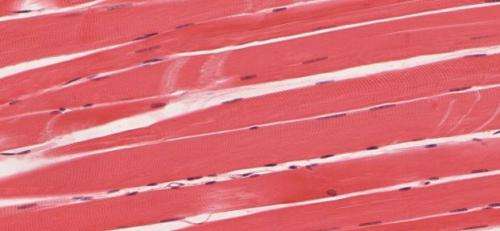
A study recently published by researchers from the Ohio Musculoskeletal and Neurological Institute (OMNI) at the Ohio University Heritage College of Osteopathic Medicine, in collaboration with a colleague from outside Ohio University, finds new evidence to support the belief that the nervous system plays an important role in age-related weakness.
An article published Sept. 25 in JAMA Network Open, a sister publication to the Journal of the American Medical Association, reports findings of a study in which researchers compared how much muscle strength older people could muster voluntarily with how much force their muscles put out when stimulated electrically. According to OMNI’s director, the results of this research suggest that physical weakness in aging may be due, at least in part, to impairments in brain and nerve function, rather than changes in the muscles themselves.
“It’s confirmatory evidence that the nervous system is a key culprit in weakness,” said professor of physiology and neuroscience Brian Clark, Ph.D., who in addition to heading OMNI, holds the Osteopathic Heritage Foundation Harold E. Clybourne, D.O., Endowed Research Chair.
Sharing authorship with Clark on the article are Todd M. Manini, Ph.D., of the University of Florida at Gainesville, and three OMNI researchers: Nathan P. Wages, Ph.D.; Janet E. Simon, Ph.D.; and Leatha A. Clark, D.P.T.
“Dr. Clark and his research colleagues have helped direct thinking in their field toward the role of the nervous system in age-related strength loss, and this latest study reinforces that insight,” said Darlene Berryman, Ph.D., R.D., L.D., associate dean for research and innovation at the Heritage College. “This is research with great potential to improve quality of life for older adults.”
The study looked at a group of 66 older adults (average age in their 70s), who were first categorized as severely weak, modestly weak or strong based on their measured performance on a standardized physical test.
In the study, the subjects were asked to push against resistance with their leg extensor muscles, using as much strength as they could generate. When they reached their self-perceived limit, the muscle they were using was then stimulated electrically. If this caused the muscle to put out more force, Clark explained, it was a sign that the strength limitation the person experienced came from somewhere other than the muscle itself.
“If force goes up (when the stimulation is applied), that lets us know that there’s some sort of deficit or impairment to the nervous system’s ability to activate the muscle,” he said. A major theme of Clark’s research agenda with OMNI has been a holistic focus on muscle function as part of a wider neuromusculoskeletal system.
When the added force that came from electrical stimulation was expressed as a percentage increment, it showed that the weaker the test subjects, the larger a boost their muscles got. The subjects in the “severely weak” group (who were on average older) got an increase of 14.2 percent—twice the 7.1 percent increase shown by those in the “strong” group.
The researchers didn’t investigate the nature of whatever nervous system mechanism might account for the ceiling on willed strength; Clark suggested it could be a matter of neuron function, or could have a psychological/motivational element, or both. Whatever it is, he added, the study has implications for addressing age-related loss of muscle strength, which can seriously reduce seniors’ mobility.
Source: Read Full Article



